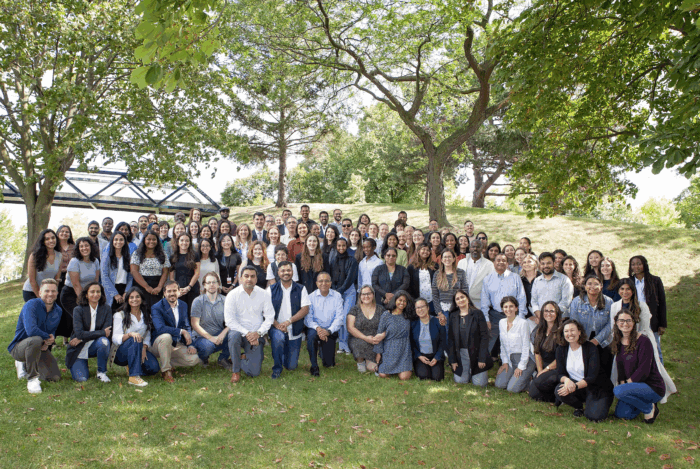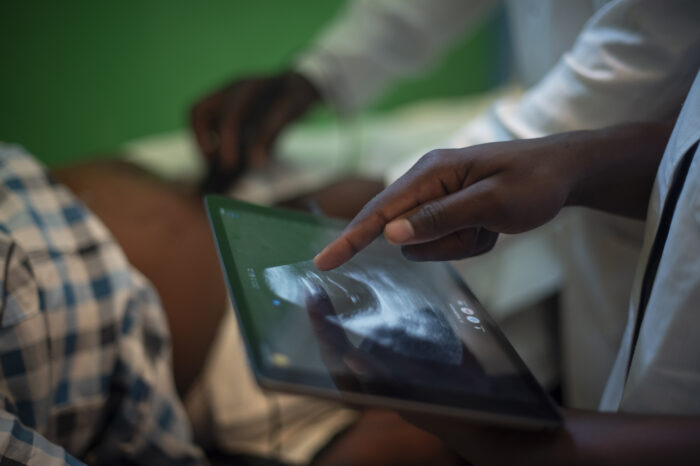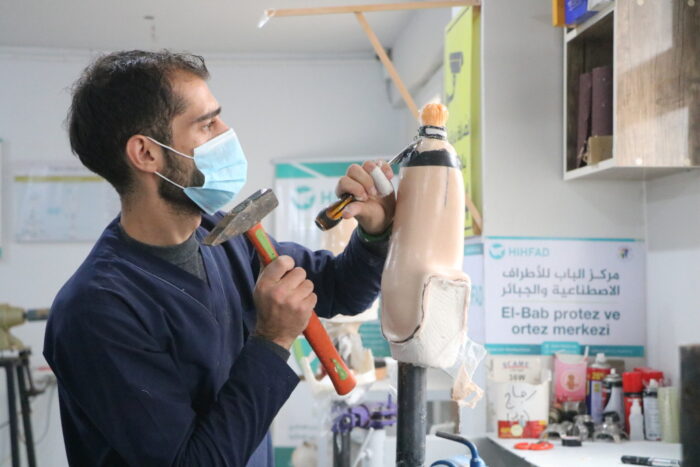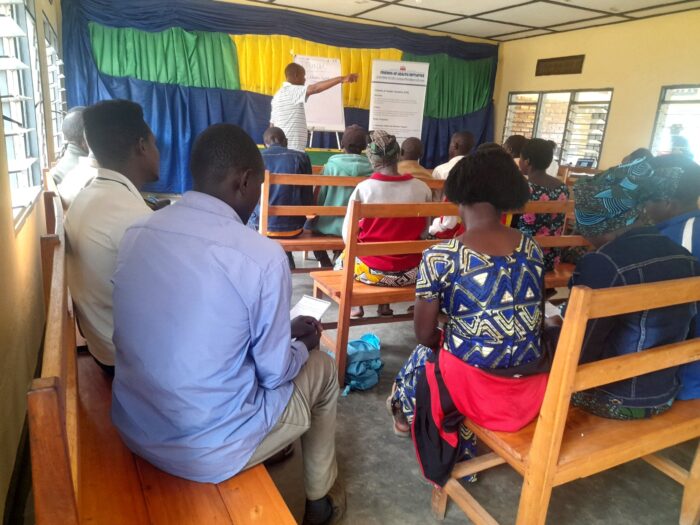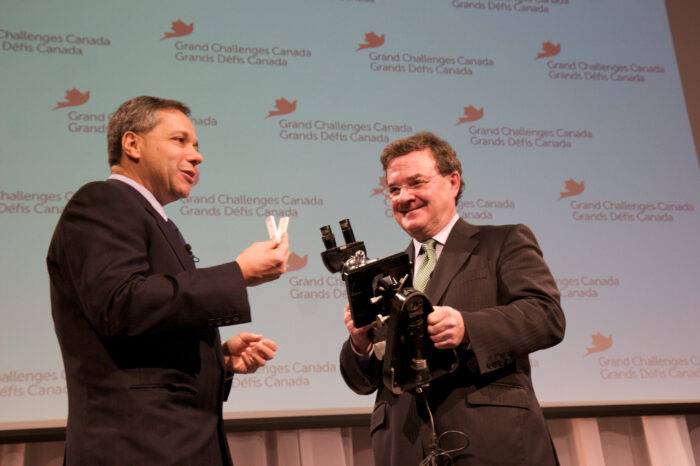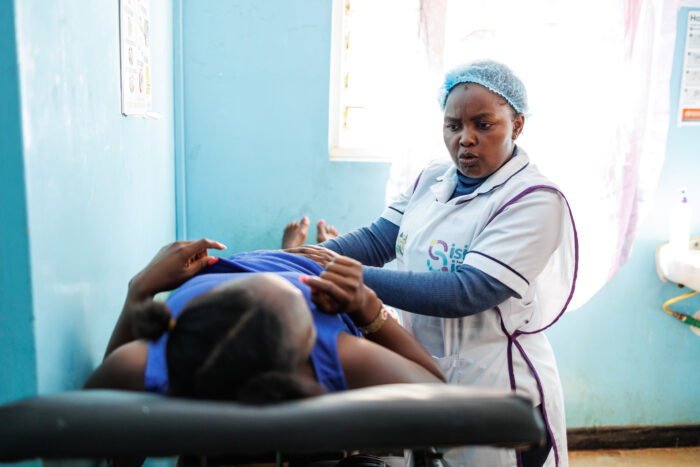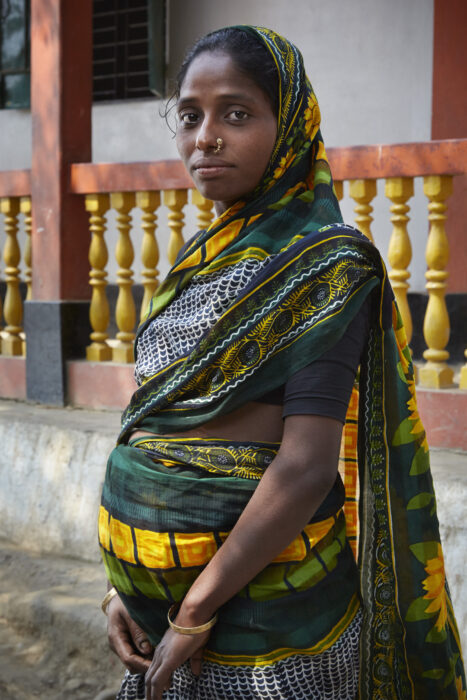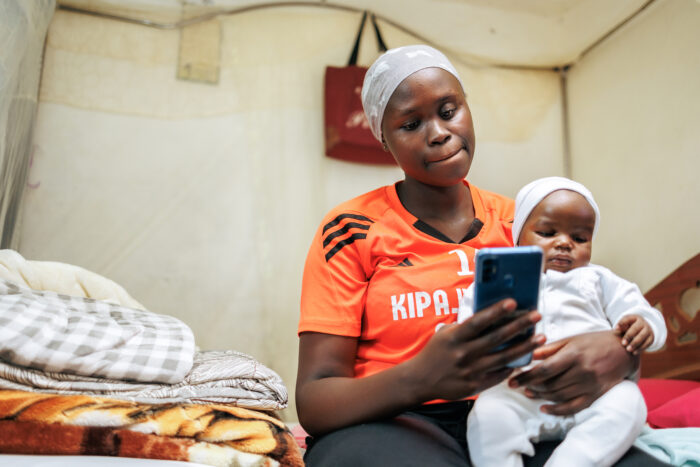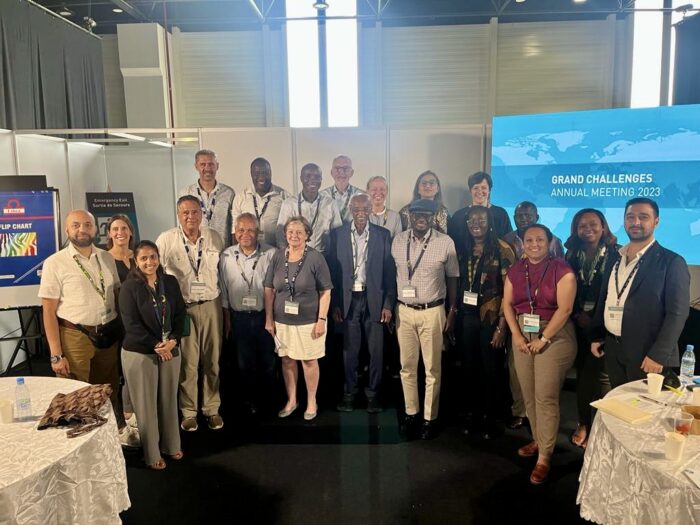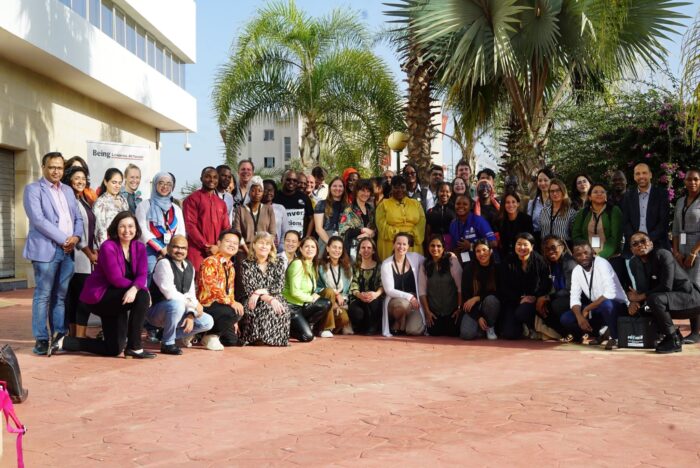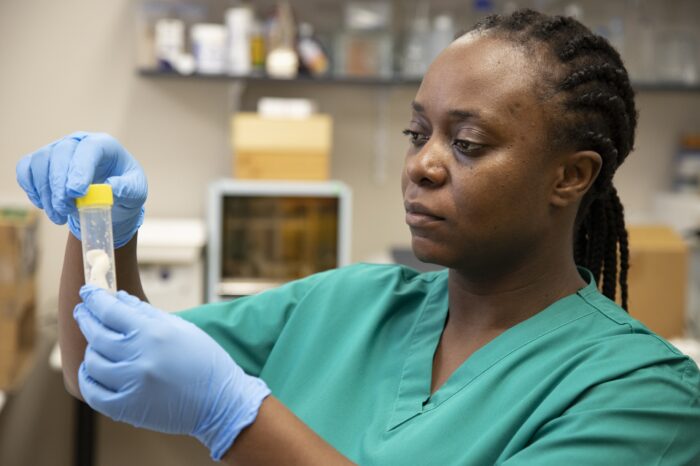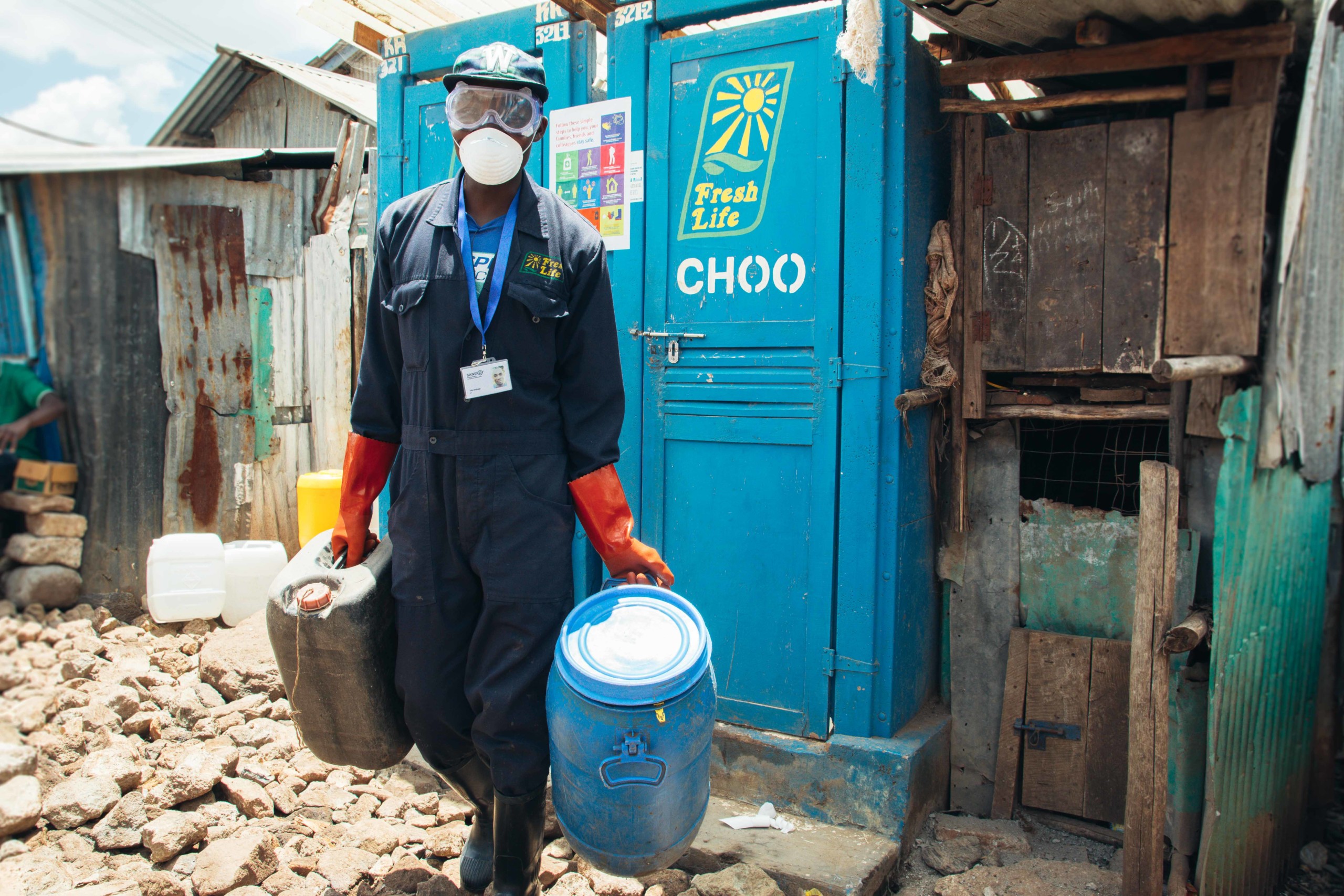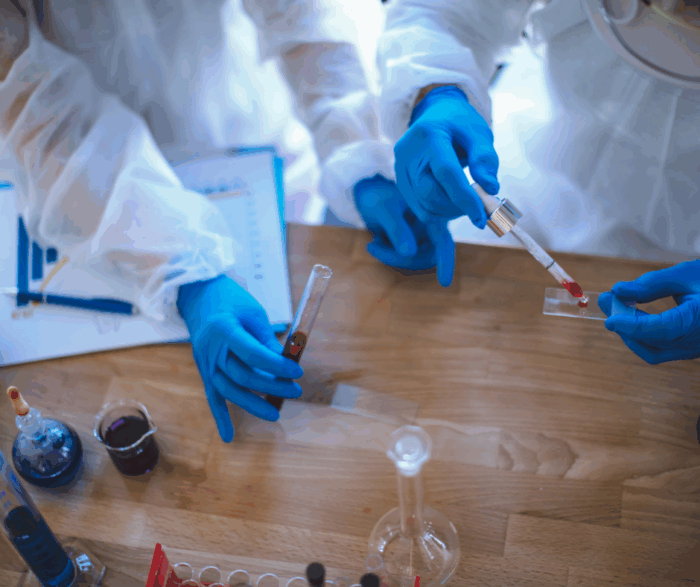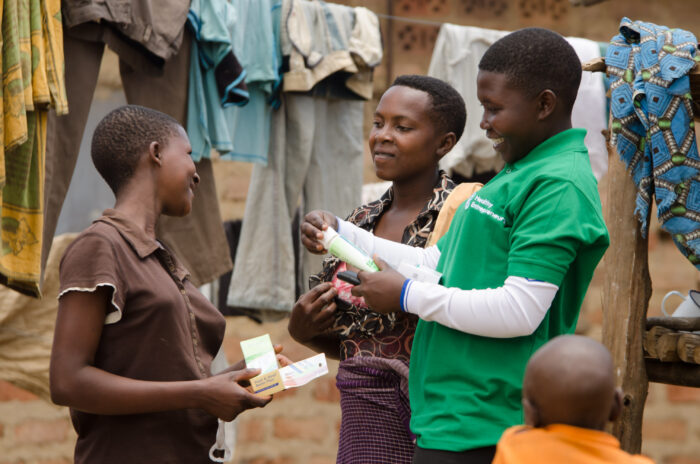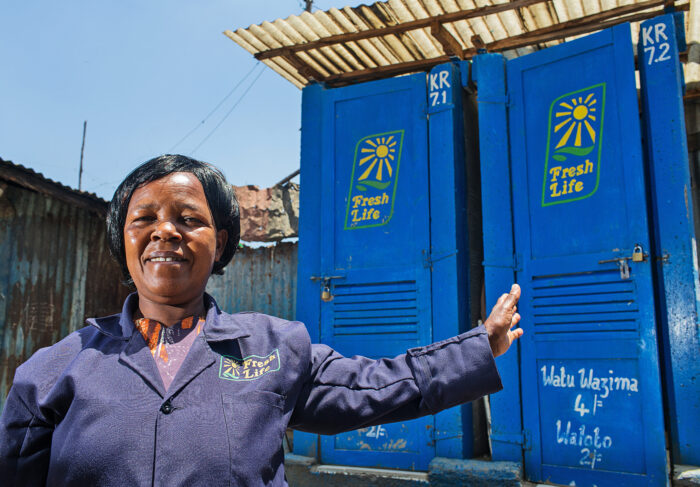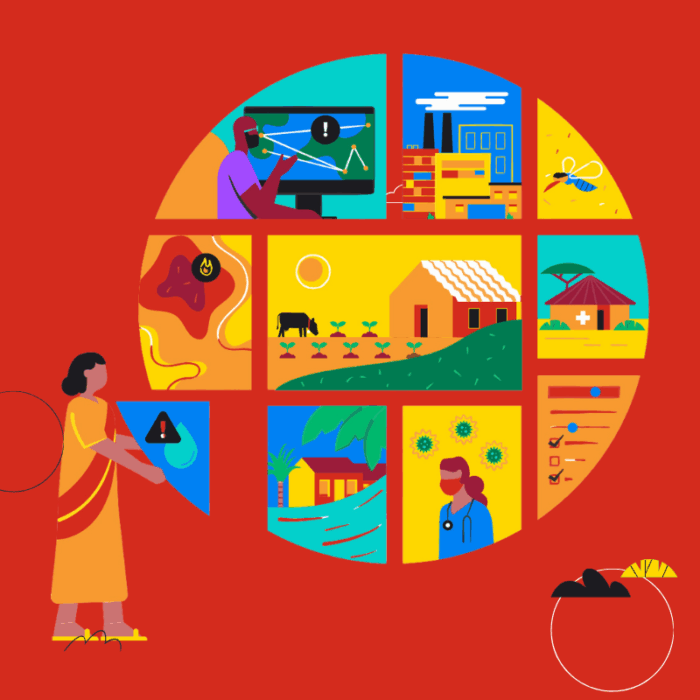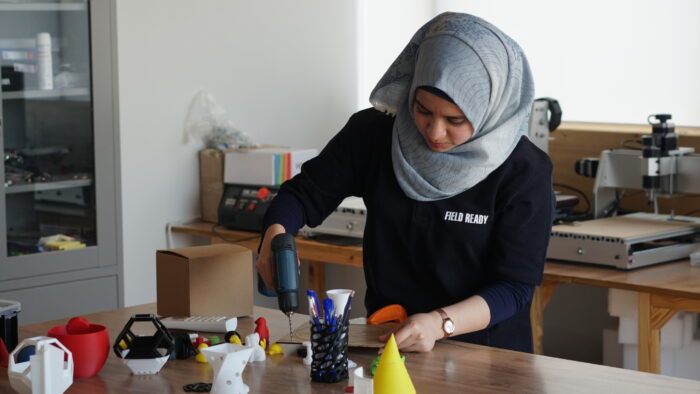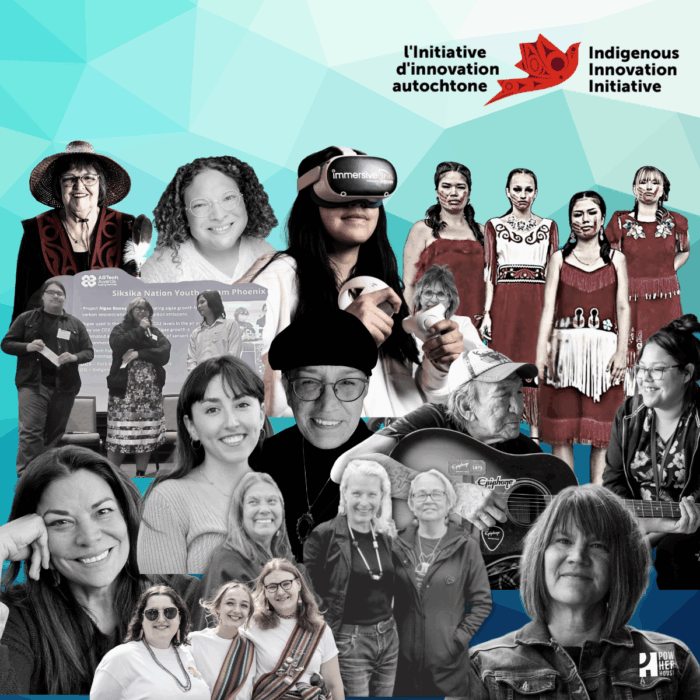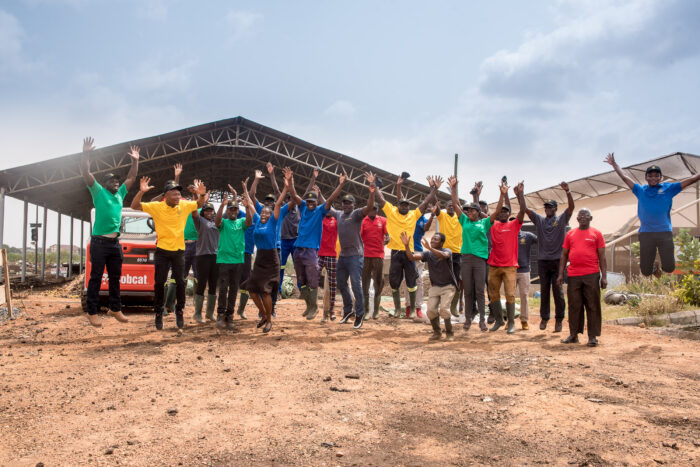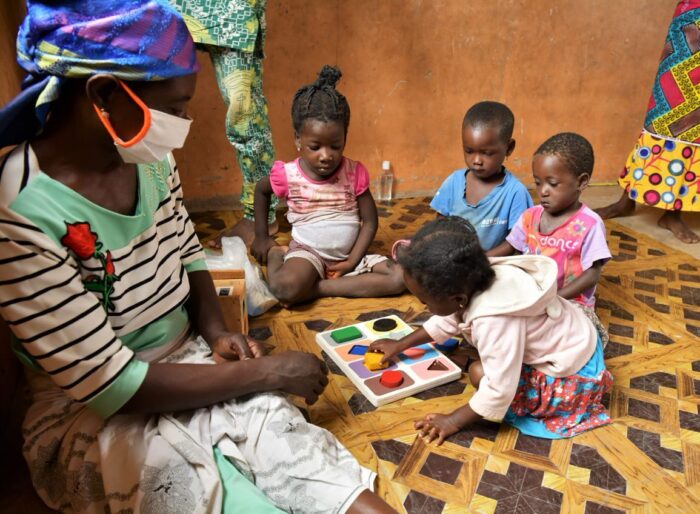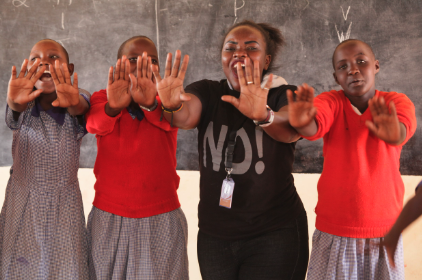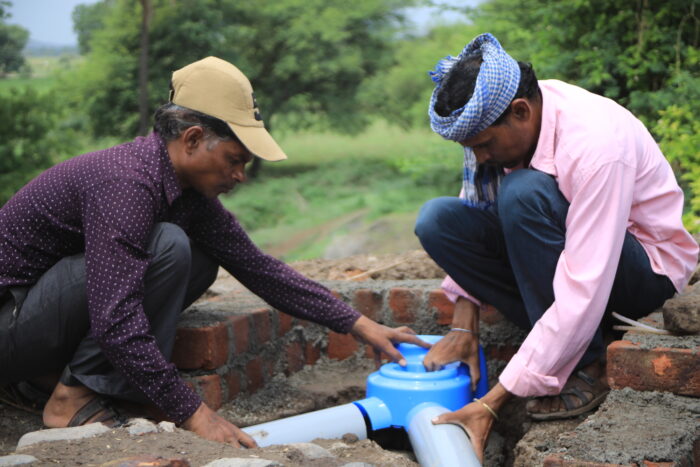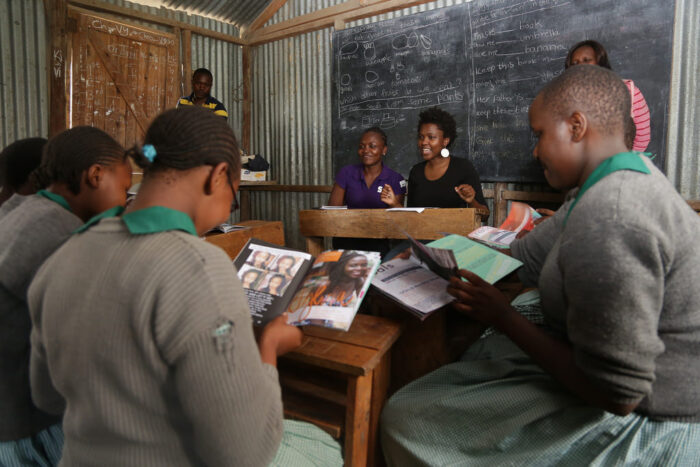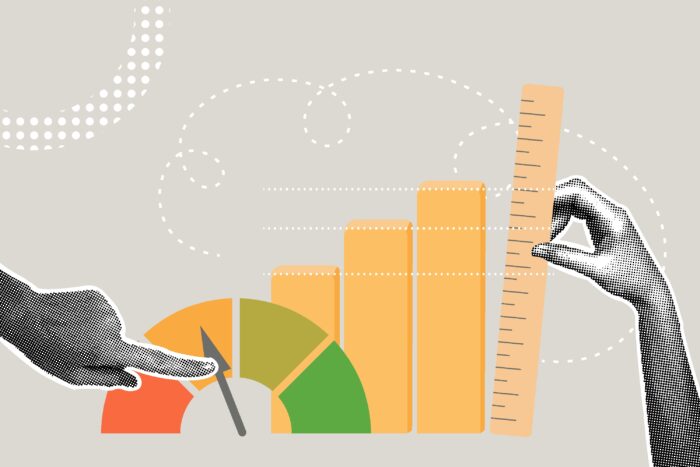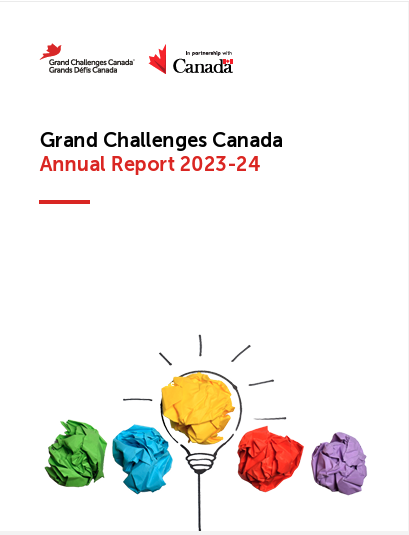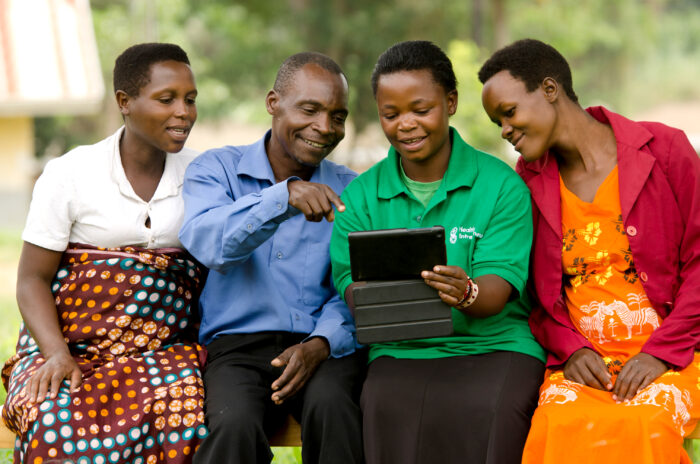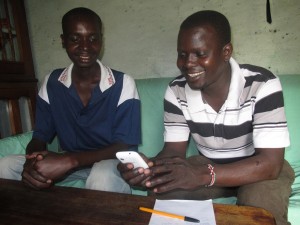A few facts and numbers from the Global Tuberculosis (TB) Report 2013 published by the World Health Organization (WHO) will remind us about the importance of World Tuberculosis Day (March 24).
TB remains a major global health problem. In 2012, an estimated 8.6 million people developed TB and 1.3 million died from the disease. It is second only to HIV/AIDS as the greatest killer worldwide that results from a single infectious agent. TB is a leading killer of people living with HIV, causing one fifth of all deaths. Over 95% of TB deaths occur in low- and middle-income countries, and it is among the top three causes of death for women aged 15 to 44. More than half a million children became ill with TB in 2012 and 74,000 HIV-negative children died of TB.
The number of TB deaths is unacceptably large, given that most are preventable. The WHO also states that multi-drug resistant TB (MDR-TB) is present in virtually all countries surveyed, particularly in regions of southeast Asia. An additional challenge is extensively drug-resistant TB (XDR-TB) that can withstand first- and second-line drugs, seriously limiting treatment options.
But it’s not all grim news. Nearly 20 years after the WHO declared TB a global public health emergency, important progress has been made. The estimated number of people falling ill with tuberculosis each year is declining (albeit very slowly), which means that the world is on track to achieve the Millennium Development Goal to reverse the spread of TB by 2015.
The WHO lists five key priorities to accelerate progress towards the 2015 targets:
- Reach the missed cases
- Address MDR-TB as a public health crisis
- Accelerate the response to TB/HIV combination
- Increase financing to close all resource gaps
- Ensure rapid uptake of innovations to fight TB.
The Government of Canada is taking the fight against tuberculosis very serious, not only within our own borders, but well beyond that. Through Grand Challenges Canada, our Government is taking the five WHO priorities to heart, by stimulating innovative solutions and interventions that improve the detection and treatment of tuberculosis. To date, Grand Challenges Canada, which is funded by the Canadian Government, has committed almost $5 million to fight tuberculosis, representing 32 innovative ideas.
Reaching the missed cases
By WHO estimates, the rate of TB incidence is falling globally by about 2% annually. However, about three million people, or a third of all new TB cases, are missed every year. Grand Challenges Canada is supporting several projects aimed at bridging this gap through innovative projects that target early diagnosis of TB, as well as those focusing on active case detection. Examples are included below.
Optimization and validation of point-of-care diagnostic test for tuberculosis (India)
A non-invasive, rapid and accurate point-of-care test will increase speed, effectiveness and accuracy of the diagnostics of TB. This is central to its control. Volatile biomarkers in human breath at picomolar concentrations will be detected with minimal laboratory setup (Sinhgad Technical Education Society).
Validation and development of an affordable sweat test for TB diagnosis (Gambia, Nigeria)
Sweating is a common symptom with tuberculosis. This project wants to evaluate the usefulness of a sweat test for early and accurate diagnosis. Sweat is been used extensively in cystic fibrosis. It helps patients to take a pro-active role in the detection process and has a very low cost (Obafemi Awolowo University).
Mobile telephone diagnostic tests application for tuberculosis suspects (Kenya)
In this case, the innovation is a mobile telephone application to assess the possibility of TB infection. Users use their phone to connect with a website, fill out a questionnaire and have the result of this online assessment on their screen (Kenya Medical Research Institute (KEMRI)).
Improving tuberculosis surveillance in low-resource settings using the Ledger Shredder (Kenya)
High HIV-related case loads, complex diagnosis and weak health systems for delivering TB care hamper efforts to reduce the global burden of tuberculosis. The innovators will develop and implement the ledger shredder to improve tuberculosis management in Kenya (Moi University).
Telediagnostics system for remote diagnostics of TB and multi-drug-resistant TB (Peru)
Digital microscopic images from 10-day MODS cultures from sputum samples will be transmitted through the Internet to a web-based system. Interpretation results are transmitted back to the original laboratory within a few minutes (Universidad Peruana Cayetano Heredia).
Liquid micro-culture assay for diagnosing multi-drug-resistant tuberculosis (Thailand)
This project aims to develop a new and simple microfluidics-enabled method for testing effectiveness of many drug combinations at once, to help optimize treatment of resistant strains of tuberculosis (University of Toronto).
Novel single diagnostic assay for active, latent and drug-resistant tuberculosis (India)
A quick and accurate diagnostic tool for latent and drug-resistant tuberculosis could save a quarter of the lives claimed by tuberculosis annually. Our innovators are developing a novel single diagnostic assay that is rapid, highly sensitive and can diagnose active, latent and drug-resistant tuberculosis (GIOSTAR Research Private Limited).
Increasing the detection, confirmation and treatment of children with tuberculosis (Ethiopia)
Detecting TB with children requires several samples and multiple tests. By combining samples and testing them all together, faster detection and a better treatment strategy will emerge. Community-based health extension workers will be used for testing in rural areas (Sidama Zone Health Department of the Ethiopian Ministry of Health).
A novel tool for disease diagnosis, drug discovery and vaccine development (Russia)
Introducing Arctic essential genes into Mycobacterium tuberculosis will make it temperature sensitive. A temperature-sensitive pathogen cannot invade the core of the human body, making it non-infectious (University of Victoria).
Diagnostic kit for early and rapid detection of pulmonary and extrapulmonary tuberculosis (India)
This kit will be based on lipid antigen detection in a patient’s body fluids. The test proved extremely sensitive and specific for early diagnosis of tuberculosis. The kit is extremely cost-effective and will be evaluated for use in health centres (Vikrant Educational and Social Welfare Society).
A rapid low-cost test for pulmonary tuberculosis (Afghanistan, India, Indonesia)
Building a low-cost and electricity-free thermal cycler that amplifies the myobacteria’s DNA in sputum samples will develop a low-cost platform for rapid detection of tuberculosis, especially in remote areas, where access to standard labs is limited (McGill University).
Development of a hand-held microcytometer for Point-of-Care CD4 enumeration (South Africa)
Using tuberculosis as a model disease, the team aims to develop a low-cost, hand-held biosensor that combines the selectivity of antigen-specific DNA aptamers with the exceptional specificity of Surface Enhanced Raman Spectroscopy, in order to reliably quantify pathogen biomarkers present in patient specimens at the point of care (University of Cape Town).
Using a mobile app for screening depression, project researchers will train primary healthcare providers to integrate mental health into routine practices to improve early identification and referral to depression treatment. A particular focus will go to patients with physical diseases, such as tuberculosis or HIV/AIDS (Universidad Peruana Cayetano Heredia).
A point-of-care TB diagnostic assay in HIV-TB infected persons (Zambia)
The project addresses the need for sensitive point-of-care diagnostic tools for tuberculosis in HIV-infected people by optimizing the LAM assay with biosensor and aptamer technology. This will lead to reducing the time to diagnose TB, leading to better management and decreased spread of the disease (University Teaching Hospital).
Low-cost synthesis of tuberculosis drugs using synthetic biology (India)
This project aims to lower the cost of second-line TB drugs by using a novel yeast-based bioprocess. The successful completion can potentially stabilize the supply of these drugs, making it more affordable for treating drug-resistant TB (University of Toronto).
Rapid and non-invasive diagnostic breath sensors (Bangladesh)
The goal is to introduce a rapid, non-invasive and low-cost tool for accurate disease diagnosis. Specifically, the innovators are developing a nanomechanical resonator platform for analysis of metabolomic biomarkers in patient breath (University of Alberta).
Improved diagnosis of respiratory disorders through urine metabolomics (India)
Diagnosing and treating respiratory diseases, especially in lower-income countries, is difficult. Often, doctors just give trials of therapy, hoping something will work. Our innovators have been developing a test to diagnose respiratory diseases using urine samples (University of Alberta).
Low-cost and Portable Hematology Analyzer (Uganda)
This project aims to develop a low-cost and portable hematology analyzer as a screening tool for several key global health diseases, including tuberculosis (University of British Columbia).
Much of the developing world has no access to basic screening technology for tuberculosis, due to the high costs of screening equipment. Grand Challenges Canada seeded a project at the University of Waterloo to build a $1,000 digital X-ray detector to accurately and rapidly detect tuberculosis in these underserved populations. A small-scale version of the detector components has been built and is being optimized (University of Waterloo).
New therapeutic drug combinations for tuberculosis treatment (South Africa)
Developing new antibiotics is traditionally a long (10–15 years) and expensive (~$800 million) process. Preliminary results from the University of British Columbia/Grand Challenges Canada identified lead candidates from repurposed drugs to be used in the fight against TB.
Addressing MDR-TB as a public health crisis
Multi-drug-resistant tuberculosis (MDR-TB) continues to be a great challenge in the management of TB, as it is far more difficult to diagnose and to treat, leading to increased transmission and mortality. According to WHO estimates, 450,000 people fell ill with MDR-TB and 170,000 died as a result in 2012. MDR-TB usually arises due to inadequate treatment and patient mismanagement. Grand Challenges Canada is supporting several innovators who are tackling this challenge.
Detecting Multi-Drug Resistant TB with DNA amplification by destabilization (Zimbabwe, South Africa)
Affordable and yet highly accurate detection tools are needed for low- and middle-income countries. Chemically modified DNA, which triggers replication when it comes in contact with DNA from a tuberculosis bacteria, can easily detect TB and MDR-TB (University of Alberta).
Fast, affordable and easy-to-use TB and MDR-TB hand-held tester (India)
Our innovators are developing a hand-held electronic platform for inexpensive diagnosis and treatment selection of TB. Diagnostic results will be available in less than one hour, which will save lives and improve health in the most resource-poor regions of the world (McMaster University).
Mystery clients to assess and improve quality of TB care (India)
Mystery patients will evaluate the quality of TB care in India and help establish a quality surveillance project. This innovative project can help to indicate bottlenecks in the provision of care, and can significantly improve the quality and reductions in diagnostic delays, which is a high priority for TB control, especially in urban hot spots with high MDR-TB prevalence (McGill University).
Miniaturization and parallelization of sample analysis can reduce the assay time to detect the causative agent of TB and drug resistance to a few hours, leading to speedy treatment. Grand Challenges Canada funded researchers who used this approach. The results indicate that we could identify presence or absence of a bacteria in a sample, and also find out the drug resistance of this bacteria (McMaster University).
Ti Kay Haiti tuberculosis adherence Program (Haiti)
Disruptions due to natural disasters and other causes can interrupt TB treatment, leading to drug resistance and deaths. In this project in Haiti, experienced patients supported newer patients in taking their TB/HIV medications daily, through phone calls from patient lists generated by an easily accessible computer database that could be used whenever there is any natural disaster (Konbit Sante).
Paper as enabling platform for cell-based assays for basic research and medical diagnostics in resource-limited environments (Brazil, Kenya)
Grand Challenges Canada supported University of Alberta scientists who designed, fabricated and validated portable cell culture devices made of simple materials, such as tape and paper, that can detect bacteriophages of organisms, including TB (University of Alberta).
New therapeutic drug combinations for tuberculosis treatment (Uganda)
The innovators addressed the problem of hundreds of antibiotics being available on the market with only a few being effective to treat tuberculosis. Identification of synergistic combinations, using drugs approved for other therapeutic applications, can allow the introduction of new tuberculosis therapies in a shorter time frame and in a less expensive way (University of British Columbia).
New and more effective drugs for treating tuberculosis from fungal sources (Ghana)
This innovation consists of proteomic analysis of the molecular mechanisms of latency and drug-resistance in Mycobacterium africanum and a screening for novel antimycobacterials from fungal sources. This will also impact treatment of both latent and drug-resistant tuberculosis (University of Ghana).
Innovative approach in TB Care (Armenia)
The project enables self-administered drug intake by empowered TB patients – supervised by a trained family member and supported by medical counseling and reminders – to improve treatment adherence and treatment success rates. This integrates several educational, technological and social, evidence-based components (American University of Armenia Fund).
Immunotherapy of tuberculosis (Mongolia)
Immunoxel (a liquid-based extract) is a multi-herbal medicine from the Ukraine. When formulated into honey lozenges from Canada and used as an immunotherapy adjunct, it reduces treatment duration by at least six-fold and enhances potency of TB chemotherapy four-fold, even in patients with MDR-TB and TB-HIV (Ecomed LLC).
Accelerate the response to TB/HIV combination
Co-infection of TB and HIV is one of the greatest public health challenges, creating difficulties in management and contributing to high mortality rates, especially in low-resource settings. Grand Challenges Canada is supporting several projects to address this.
Feasibility of multi-disciplinary Point-of-Care testing in an HIV treatment clinic (South Africa)
This multi-disciplinary team will assess the safety, cost-effectiveness and impact on clinical outcome of point-of care testing for HIV and tuberculosis in several different clinical settings in South Africa (University of the Witwatersrand).
Ensuring rapid uptake of innovations to fight TB
In its commitment to the fight against TB, Grand Challenges Canada is working to ensure there is linkage between innovative research, healthcare providers and patients in a way that accomplishes the goal of solutions reaching those in need. An example of such a project is:
An electronic register to increase TB detection and treatment success (Uganda and South Sudan)
Optimizing an electronic TB register (eTBr) will facilitate completeness and accuracy of data capture, analysis and, in turn, timely reporting. Potential defaulters will receive a reminder text message. Successful detection and treatment rates could go up as much as 15% (Health Child Sudan).
Increasing financing to close all resource gaps
The Government of Canada is a major global contributor in the fight against tuberculosis, helping people who have limited access to quality healthcare services, often the most vulnerable members of society. Through Grand Challenges Canada’s Stars in Global Health program alone, almost $5 million has been committed to the fight against this global scourge. This is indicative of the importance attached to this.
The above projects reconfirm that the Government of Canada is supporting innovation in the fight against TB. Canada’s approach to fighting tuberculosis relies on strong and effective collaboration with worldwide partners and a significant contribution to the Global Fund. This commitment builds on the Muskoka Initiative as well, saving lives of women, children and newborns in developing nations.
Join the conversation on Twitter by using hashtag #WorldTBday. We encourage you to post your questions and comments about this blog on our Facebook page Grand Challenges Canada and on Twitter @gchallenges and @Kenssimiyu.
